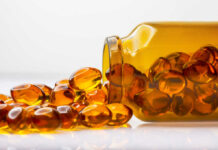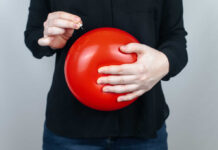
One day you’re breezing through life barely noticing the bag of chips on the counter, and the next, you’re stalking the pantry at 3pm with a craving that feels like sabotage—midlife snackiness doesn’t just sneak up, it roars in.
Story Snapshot
- Hormonal changes, particularly perimenopause, drive increased snack cravings in your 40s
- Modern food environments and stress amplify the urge to snack
- Persistent cravings can impact weight, mood, and long-term health
- Evidence-based strategies can help regain control over snack attacks
Snackiness in Your 40s: A Biological Turning Point
Women in their 40s frequently report a dramatic uptick in snack cravings. This phenomenon aligns with perimenopause, a transition marked by fluctuating estrogen, progesterone, and cortisol levels. Estrogen, which helps regulate appetite, begins to decline. Cortisol, the stress hormone, often rises as life throws more curveballs, making cravings for sweet or fatty foods more intense. These hormonal shifts disrupt hunger cues and satiety signals, leaving snack urges feeling urgent and inexplicable.
Metabolic changes further complicate the picture. Muscle mass naturally decreases with age, and resting energy expenditure slows down. The body burns fewer calories at rest, yet cravings—especially for quick energy in the form of snacks—often spike. This mismatch between metabolic needs and appetite fuels both frustration and weight gain.
The Food Environment and the Psychology of Cravings
Food manufacturers have perfected the art of tempting midlife snackers. Supermarket aisles, workplace break rooms, and even gas stations overflow with processed snacks designed to trigger your cravings. Larger portion sizes, endless flavor varieties, and aggressive marketing campaigns prime your brain to seek out a pick-me-up. Social cues compound the issue—snacks at meetings, celebrations, or while watching TV become routine, even when hunger isn’t the driver. Distracted eating, social pressure, and the normalization of frequent snacking erode natural appetite regulation, making resisting cravings a constant battle. The result: an environment where snackiness is not just expected, but practically engineered.
Chronic stress adds fuel to the fire. Psychological research shows that stress not only increases cravings but also shifts preferences toward high-sugar, high-fat foods. The brain’s reward circuits light up in response to these “comfort foods,” providing temporary relief but fueling a cycle of overeating and guilt.
Consequences and Solutions: Navigating the Midlife Snack Trap
Unchecked snackiness carries real consequences. In the short term, frequent snacking spikes blood sugar, disrupts energy, and can leave you feeling sluggish. Over time, the risk of weight gain, metabolic syndrome, and chronic diseases like diabetes and heart disease rise sharply. Families and workplaces are not immune—midlife snack attacks can sap mood, productivity, and overall well-being, driving up healthcare costs and fueling demand for wellness products.
Watch: Strategies to Control Snacking and Manage Cravings 🍏
Medical and nutrition experts agree: managing midlife snackiness requires a multi-pronged approach. Prioritize meals rich in protein and fiber to promote lasting satiety. Practice mindful eating—slow down, savor each bite, and minimize distractions. Stress management is non-negotiable; regular exercise, quality sleep, and relaxation techniques help lower cortisol and curb emotional eating. Choose nutrient-dense snacks like nuts, yogurt, or fruit instead of processed options, and watch portion sizes to avoid mindless grazing. If cravings persist or disrupt daily life, consult a healthcare provider, especially if perimenopause symptoms are in play.
Sources:
MindBodyGreen
NIH PMC4189179
Harvard Nutrition Source
NIH PMC4276433
NIH PMC7399671
HelloBonafide
Healthline
University of California


















